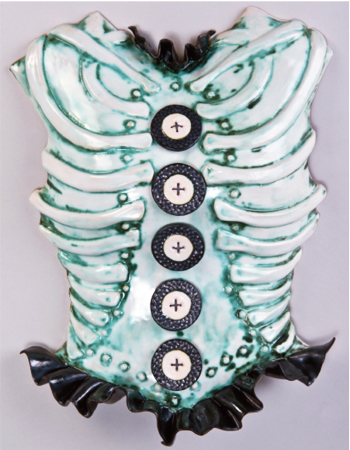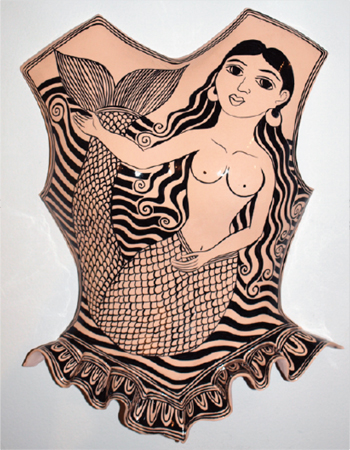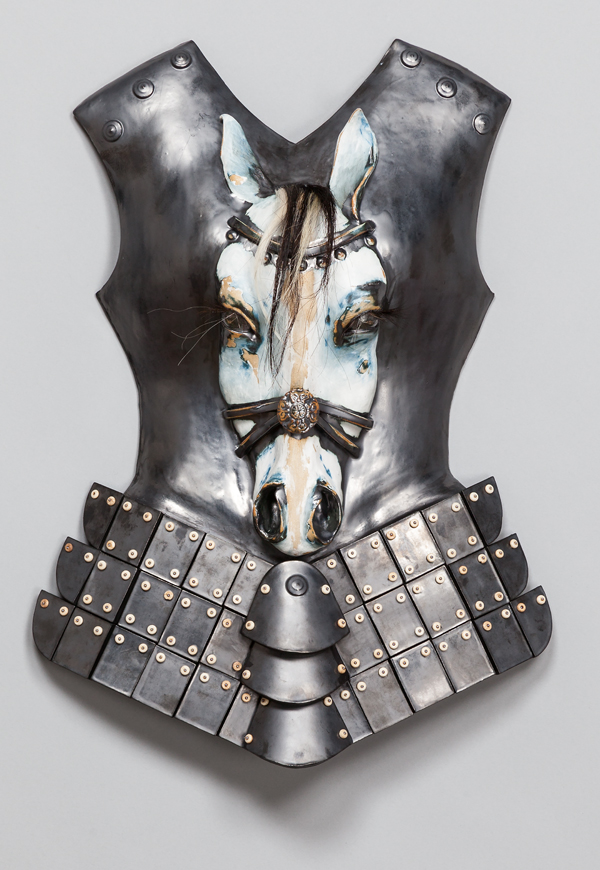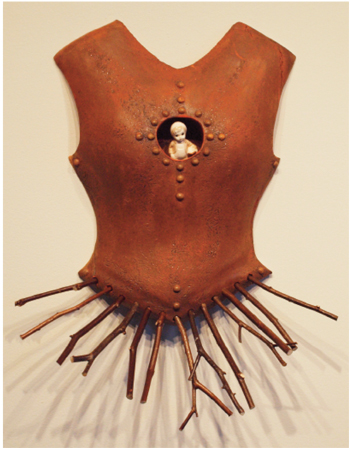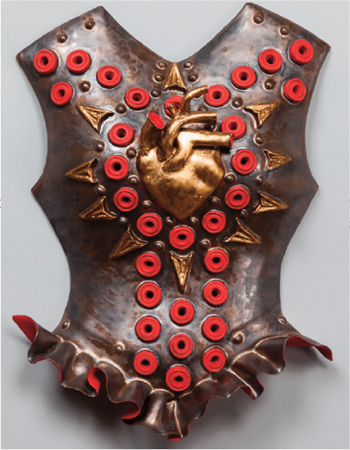BETSY BIRKNER – CERAMICS
& Angelica Morales
BIO
From the “I should be…” Armor series:
Clay, underglaze, glaze, thread. Various sizes. Total of seven (7) pieces.
I am intrigued and inspired by deities, royalty and pop culture icons and how their garments contribute to their presence and personal power. Is the function of their fashion to reveal, conceal, protect or invent the wearer’s identity and belief system? The I should be . . . “I” armor series explores this question, specifically as it relates to women.
Armor 1, I should be skinny, 2011,
clay, underglaze, glaze, thread,
17”x 12” x 4
Armor #2 I should protect the oceans, II 2014,
clay, glaze, found objects,
18” x 13” x 5”
Armor #12 La Serena, The Mermaid, 2014,
ceramic, 18” x 13” x 5”
(in collaboration with Angelica Morales, Dignicraft),
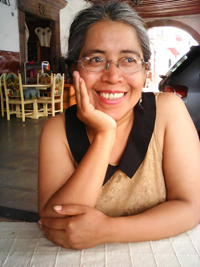 BIO
BIO
Armor #4 I should follow my spirit II, 2015
ceramic, horse hair, shells, seed beads
22” x 15” x 5”
Armor #3 I should be safe, II; 2014
clay, glaze, casein paint, found object,
23” x 15” x 6”
Armor #5 I should open my heart; 2014
ceramic, underglaze,glaze, gold particle wax,
18” x 13” x 5”
Armor #6 Sacred Heart / Sagrado Corazon. 2014
(in collaboration with Angela Morales, Dignicraft) 2014.
clay, glaze, casein and metallic paint, gold leaf,
18” x 13” x 6”
BIO:
I am intrigued and inspired by dieties, royalty and pop culture icons and how their garments contribute to their presence and personal power. Is the function of their fashion to reveal, conceal, protect or invent the wearer’s identity and belief system? The “I should be. . .” armor series explores this question, specifically as it relates to women.
Growing up in the South, there were expectations about how a successful woman should be. “I should be nice,” is the first rule of southern charm. The larger cultural expectations dictate that women should be sexy, or skinny, have babies, careers, etc., sometimes pushing us to illness or outrageous surgeries. We armor ourselves against the onslaught of family, media and cultural messages, protecting the vulnerability of the ideal self. Until our true values can emerge from behind the curtain, the ceramic armor serves as a façade of adorned fragility. The decorated armor addresses the issues of human development as we make choices about rules for living. “I should be nice”, uses rose thorns to show the paradox of how difficult “nice” can sometimes be. Later in the series, becoming a better person is explored as shown by the happiness of wax lips, the spirituality of horse symbolism, and the need to be safe from antiquated ideas of discipline. The fragility of the utilitarian object of war being sculpted of clay suggests our temporary nature as we invent and protect our authentic self. We can break free from the messages that do not ring true for us.
I love this quote from Pema Chodron as it relates to armor, “Our personal armor is made up of habits and fears and we can begin to let those go, to claim our warriorship.”
Making Barbie doll gowns and ironing church vestments with her grandmother in Mt. Airy, NC, started Betsy down the path of fashion obsession. She earned her BFA at Winthrop University. Painting 1950’s cocktail dresses worn by transparent figures and designing for ad agencies, non-profits and small businesses have kept her busy until recently. Her work now encompasses the new media of clay and fabric to explore the iconic reference to church and crown while creating three-dimensional ceramic armor and two-dimensional crown imagery. Exploring the use of clay, seed beads, pearls, Austrian crystals, antique doilies and found objects, she incorporates religious cultural imagery. Photography, botanical illustration and teaching color theory are secondary loves. She most recently received a Regional Artist Project Grant from the Arts and Sciences Council in Charlotte, and finished as Windgate 11-Month Affiliate Artist at McColl Center for Art + Innovation.
bbirkner@carolina.rr.com – betsybirkner.com
About Angelica Morales:
Angelica Morales Gámez and her brother, Manuel Morales Gamez, and sister, Leticia Morales Gámez, follow in the footsteps of their mother Doña Ofelia Gámez in producing black and white ceramics. Angelica has been working at her craft for over 18 years and is the fourth generation of her family to continue making black and white pottery.
Ceramics is the most practiced craft in Mexico and dates back thousands of years before the Pre-Columbian period, when ceramic arts and pottery crafts developed with the first advanced civilizations and cultures of Mesoamerica. With one exception, pre-Hispanic wares were not glazed, but rather burnished and painted with colored fine clay slips. The potter's wheel was unknown as well; pieces were shaped by molding, coiling and other methods. After the Spanish invasion and conquest, European techniques and designs were introduced, nearly wiping out the native traditions.
Angelica lives and works in a small town in Michoacán where she creates old-style Tzintzuntzan pottery with pleasing, simple decorations in manganese black over a background of kaolin white and glazed, these days, with a lead free glaze.
Angelica lives and works in a small town in Michoacán where she creates old-style Tzintzuntzan pottery with pleasing, simple decorations in manganese black over a background of kaolin white and glazed, these days, with a lead free glaze.


